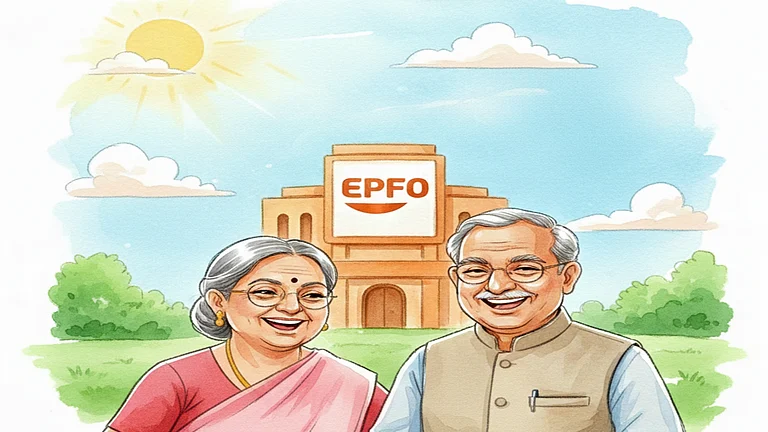Voluntary retirement is when an employee wants to retire voluntarily before their superannuation date. In this case, the retirement benefit may be deferred to the date of superannuation. The settlement amount in such cases is calculated based on the size of the accumulated corpus and the number of years of work. Voluntary retirement rules are defined under Rule 12 of the Central Civil Services (Implementation of NPS) Rules, 2021, for government employees covered under the National Pension System (NPS). According to this rule, "At any time after a Subscriber has completed twenty years' regular service, he may, by giving notice of not less than three months in writing to the appointing authority, retire from service."
So, a government employee, after completing 20 years of service, is eligible to take voluntary retirement and receive retirement benefits. According to the rules, a subscriber is entitled to the retirement benefits prescribed under the Pension Fund Regulatory and Development Authority (Exits and Withdrawals under National Pension System) Regulations, 2015. At the same time, if a subscriber wants to defer the payment or continue the NPS account by converting it into the all-citizen model account, it is also permitted per PFRDA rules.
How Much Money Can A Subscriber Withdraw From NPS Upon Voluntary Retirement?
The withdrawal amount depends on the accumulated amount. According to the PFRDA (Exits and Withdrawals under the NPS) (Amendment) Regulations 2021, at least 80 per cent of the accumulated corpus (pension wealth) must be used to purchase annuity in case of voluntary retirement. The remaining balance (20 per cent) can be withdrawn as a lump sum.
Rajesh Khandagale, SVP - NPS, KFin Technologies, highlights that exiting NPS before superannuation in government model or before turning 60 years in all-citizen model is termed as premature exit. Full corpus withdrawal is allowed if it does not exceed Rs 2.5 lakh.
When The Corpus Is More Than Rs 2.5 Lakh:
If the accumulated pension wealth exceeds Rs 2.5 lakh but the subscriber is younger than the minimum age required for purchasing an annuity from empanelled providers, they must continue subscribing to NPS until they are eligible to purchase annuity.
When The Corpus Is Up To Rs 2.5 Lakh:
If the accumulated pension wealth is equal to or less than Rs 2.5 lakh, the subscriber may withdraw the entire amount without purchasing an annuity. Exercising this option extinguishes any further right to receive a pension or other NPS benefits.
Annuity In Voluntary Retirement:
Further, the annuity must for life time for both the subscriber and their spouse, if any. It should also include a provision for the return of the purchase price (RoP) of the annuity. Upon the subscriber's demise, the annuity is reissued to family members in a specified order: first to the living dependent mother, then to the living dependent father. After these family members are covered, the purchase price is returned to surviving children or, in their absence, to legal heirs.
How Is The NPS Corpus Paid Back If A Voluntarily Retired Employee Dies Before Reaching Superannuation Age?
In such a case, 80 per cent of the accumulated pension wealth must be used to purchase an annuity.
Khandagale clarifies, "If corpus is more than Rs 5 lakh, then 20 per cent of corpus can be taken as lumpsum and 80 per cent as annuity for nominee as family pension."
So, after purchasing annuity for 80 per cent of the pension wealth, nominee or legal heir can claim the remaining 20 per cent in lump sum.
Notably, if the pension wealth is equal to or less than Rs 5 lakh, the nominee or legal heir can withdraw the entire amount without purchasing an annuity. There will be no further pension benefits then.
The annuity contract must provide for annuity for life for the spouse, if any, with return of purchase price. Upon the spouse's demise, the annuity is reissued in order: first to the living dependent mother, then to the living dependent father. After these members are covered, any remaining purchase price is returned to the surviving children or legal heirs as applicable.



















